Mi/Honeywell Smoke Detector (review)
Like it or not, fires in the home are something many will encounter at some point in their lives, even if it’s a very small and seemingly inconsequential pan fire (that can also be very dangerous). A fire in your home is a scary enough thing when you’re there to witness it, and subsequently, attempt to stop it, but it’s the fires you’re not aware of, often until it’s too late, that are in many ways more dangerous. It’s said that smoke inhalation can often kill you, even before the fire does. All quite scary stuff, and thankfully it’s not something I’ve had to come up against myself so far. Still, just with any kind of sensor, early warnings are really very important, so you’re more prepared to stop things before they get out of hand or at least provided with a bit more of a warning if you need to get out of the house. Notifications of a water leak are one thing that can save a lot of money and damage if you get it early enough, but fires can kill, and so probably even more important. The first smoke alarm was patented in 1890, and whilst the technology has improved a lot over the years, we’re now in a world where you can get notified of problems on your smartphone or smartwatch, wherever you are in the world, and smoke alarms are perfect for not only early detection but also notification – remote or otherwise.
With these sombre thoughts in mind, today I’m turning my attention to a small and relatively cheap smoke detector/alarm, made as a collaboration between Mijia and Honeywell.
- Now before I go headlong into the review itself, it should be noted that this is certified for use in Mainland China and Hong Kong only. This doesn’t mean you can’t use it (although that also depends on the laws in your particular country), but if you did have a fire, and wanted to claim on your insurance, whilst relying on this device as your only form of smoke detection, chances are you wouldn’t be covered, as it wouldn’t be considered admissable as a certified device (unless you live in China or Hong Kong, obviously). So, it’s probably best to view this as a backup as opposed to the main sensor/alarm/detector, or better still, simply treat it as a notification device, with a regular ‘dumb’ smoke alarm as the main detector for the purposes of insurance, as well as an extra layer of safety. More is better I would suggest.
UNBOXING
The Mi/Honeywell Smoke Detector has been around for a few years now, and in that time the packaging hasn’t really changed since I bought my first unit in early 2018. The front shows the device itself, or at least what you’ll see of the device once it’s in place, with some Simplified Chinese text at the bottom that basically translates to ‘Smoke detector’ or ‘smoke alarm’.
The sides of the box are equally barren of much detail, with only the Mijia and Honeywell logos on one side, and a smoke icon with the same Simplified Chinese text as is found on the front.
Once opened, the smoke alarm is the first thing you’ll see. Underneath that is the provided CR123A battery, also known as a half-AA battery (not to be confused with the less common ER14250 battery). To complete the list of contents, you’ll find two rawl plugs and corresponding screws, two small booklets in Simplified Chinese, and two double-sided curved strips if you don’t want to mount the alarm with the screws.
THE SMOKE ALARM
The device is relatively small, although probably no smaller or larger than a standard ‘dumb’ smoke alarm. It’s circular, coming in at 90mm/3.54in in diameter, and 36mm/1.42in in depth. It weighs approximately 100g/3.52oz, so is light enough to be suspended from a ceiling without the worry that it’ll fall under its own weight. The front has a series of holes for the alarm, with an inner, elevated circle that exposes the smoke detecting sensor array. Imagine a typical flying saucer with windows atop the disc…There’s a button to set up the device, that can also be used for testing and muting the alarm when necessary.
The rear of the detector houses the battery compartment and is held in place with the backplate the slots into position with a slight turn. The two curved adhesive strips sit in the recessed areas of the backplate perfectly. You also have two screw holes if you go with the more permanent fitting option.
The alarm part of the device has an 80dB built-in siren, which might not be the loudest on the market, but in my tests, it is plenty loud.
IN MI HOME | AQARA HOME | APPLE HOME
The smoke detector can work as a standard device without the app, so if you don’t want to use the smart parts, then it still functions as required, which is great, as you wouldn’t want the device to only function if it’s connected to a network. Of course, if you want notifications, or use it in automations, you’re going to need to add it to either the Mi Home or Aqara Home apps, and as it uses the Zigbee protocol for wireless communication, you’re going to need a Zigbee hub. As this is an older device, it will work with the older Mi hub, as well as the newer Aqara hub. You’ll need the Aqara hub if you want it exposed to HomeKit, with the hub on at least 1.5.0 firmware.
If you use the Mi Home app for this device set to the Chinese Mainland server, along with the Aqara hub, it will, in turn, be exposed to Homekit and appear in the Apple Home app. In the Mi Home app, you have a few options for the device; You can automatically link the smoke detector to the alarm part of the hub without the need to create an automation. You can, of course, create separate automations, although you may want to create your automations in the Home app to control other HomeKit devices, like lights or smart bulbs, for example. There’s an option for the app to remind you to test the alarm monthly, although I’ll be honest and say I can’t ever recall getting a notification as such, so I’m not sure if it actually works, and I’ve just not noticed. The self-check function simply asks you to start the procedure and confirm if you’ve heard a loud beep from the device, to confirm both the battery is in working order, and the device is connected. In terms of where the device is situated, you can adjust it to one of three detection tolerance levels;
- Smoke-Free Zone
- Zone for a small amount of smoke (eg a living room where someone may smoke a cigarette)
- Zone for a moderate amount of smoke (eg kitchens)
As I’ve got my Smoke alarm added to the Mi Home set to the Chinese Mainland server, this setup is the most convenient setting, where regional blocks with the Mi Home app and Xiaomi smart home products can be an issue. As far as I’m aware, you can’t add this device to any hub other than the Chinese one if you’re using the Mi Home app, but you can add it to any hub via the Aqara Home app. To add it this way, you need to be signed out of the app, which sets the app to HomeKit Mode. Once in this mode, any device listed in the Aqara app can be added to the hub, including the smoke detector. In the Aqara app, it doesn’t appear you get the same options that you see in the Mi Home app, so no smoke level settings, or monthly test reminders.
Setup via the Mi Home or Aqara home apps is as easy as it gets, and is pretty much in line with other devices in respect of adding them to the system.
IN DAY TO DAY USE / SUMMING UP
With something like a smoke alarm, it’s not easy to truly know whether it will work when the time comes, and how reliable it is until you have a fire! You can do the monthly tests of course, but in order to really know if it can detect smoke, you’re going to have to create some…err…smoke. I’m not suggesting you set your sofa on fire of course, but something like an incense stick or a slow-burning piece of card, held near the smoke sensor should soon tell you if it works. These are the kinds of tests I’ve performed periodically, just to make sure it’s fit for purpose, and so far so good. There’s always the possibility that it could let me down just when I need it, but then that’s true of any smoke alarm in theory.
I’ve had this early 2018, and so far I’m glad to say it hasn’t had to be triggered as part of a real emergency, but all the tests I’ve done, have triggered the alarm each and every time. In the time that I’ve had it, I’ve moved home once, and setting it up anew was as easy as I’d hoped, although keeping it paired to the same hub, which in turn, whilst connected to a new wifi network, still had the same SSID and password, definitely helped. Since having had this smoke detector for almost exactly two years, the battery is still showing as 100%, which is a bit suspect, although I’ve seen this with other Zigbee-based devices, like the Hue Dimmer Switch, for example, so maybe not so unusual. Some online stores claim the replaceable battery has a 5-year lifespan, so in theory, you’d only have to replace the battery once for the average lifespan of the device – it’s recommended that smoke detectors are replaced every ten years.
This is considerably cheaper than many of the other smart HomeKit compatible models available, and it’s worth noting that with the Honeywell connection, it can be taken seriously. I can’t imagine a company like that putting their name to something if it’s not any good. Indeed, First Alert’s OneLink series of smoke and carbon monoxide alarms have had some terrible reviews on Amazon and considering the company’s years of expertise in the field, you’d expect better performance, which according to quite a few less than happy consumers, isn’t exactly the case. I only have a couple of Onelink Multi-sensor devices, and they’ve been very solid, so I don’t have a bad experience with their products, albeit limited to one device type.
Since the introduction of the Aqara hub, with it being the first HomeKit compatible device that also supported child devices that in turn got exposed to HomeKit, many people still ask if this is compatible, and as is evident from the review, it emphatically is. As already stated, you do need to have your hub running firmware 1.5.0 or higher, but it’s unlikely you’re running anything lower than this on your Aqara hub at this point.
So, would I recommend it? Yes, I would, with the explicit provision that it be treated as complementary to a standard ‘dumb’ smoke alarm, and as such, treated as a backup, albeit with smart connectivity. If you live in the US and want just the one device to be smart and not rely on a ‘dumb’ backup, then it would seem that First Alert/OneLink is your only option for HomeKit. If you live in the EU, you have offerings by both Eve and Netatmo, while both expensive, do look good, although they also look suspiciously alike. Both Eve and Netatmo are generally considered as reliable companies, with good products.
It should also be pointed out that as this is an older product in Mija’s arsenal of smart devices, there’s currently no replacement for this product that we’re aware of that’s also HomeKit compatible, with the only other product that works with the Xiaomi smart home system being the Aqara smoke alarm. However, apart from not being compatible with HomeKit, it’s really only designed to work in China, as it comes with a SIM card to dial out in case of an emergency, but is only compatible with Chinese telecoms systems.
Whatever you choose to do, it’s wise to get a smoke alarm regardless of whether it’s a smart or dumb one, as you never know what might happen.



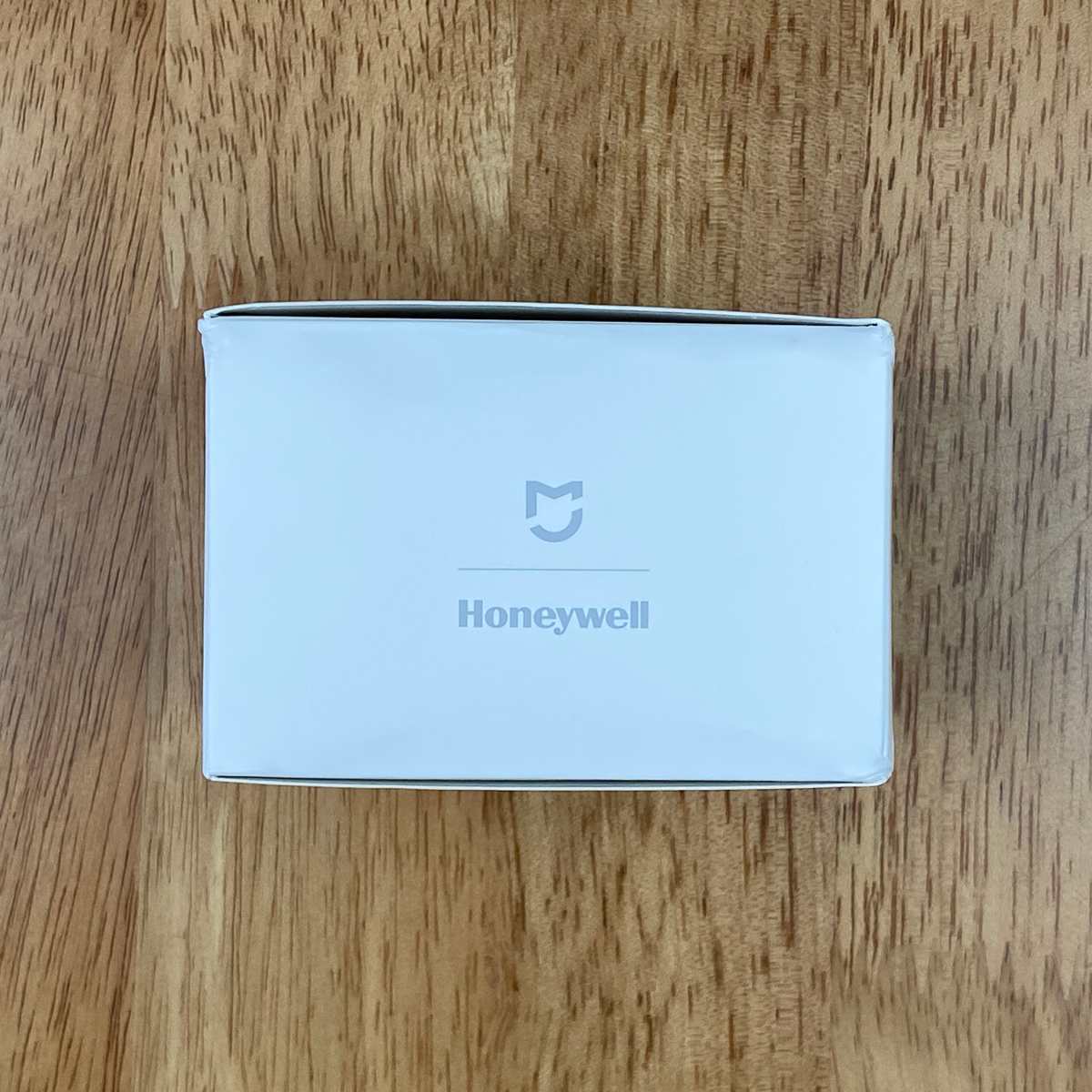
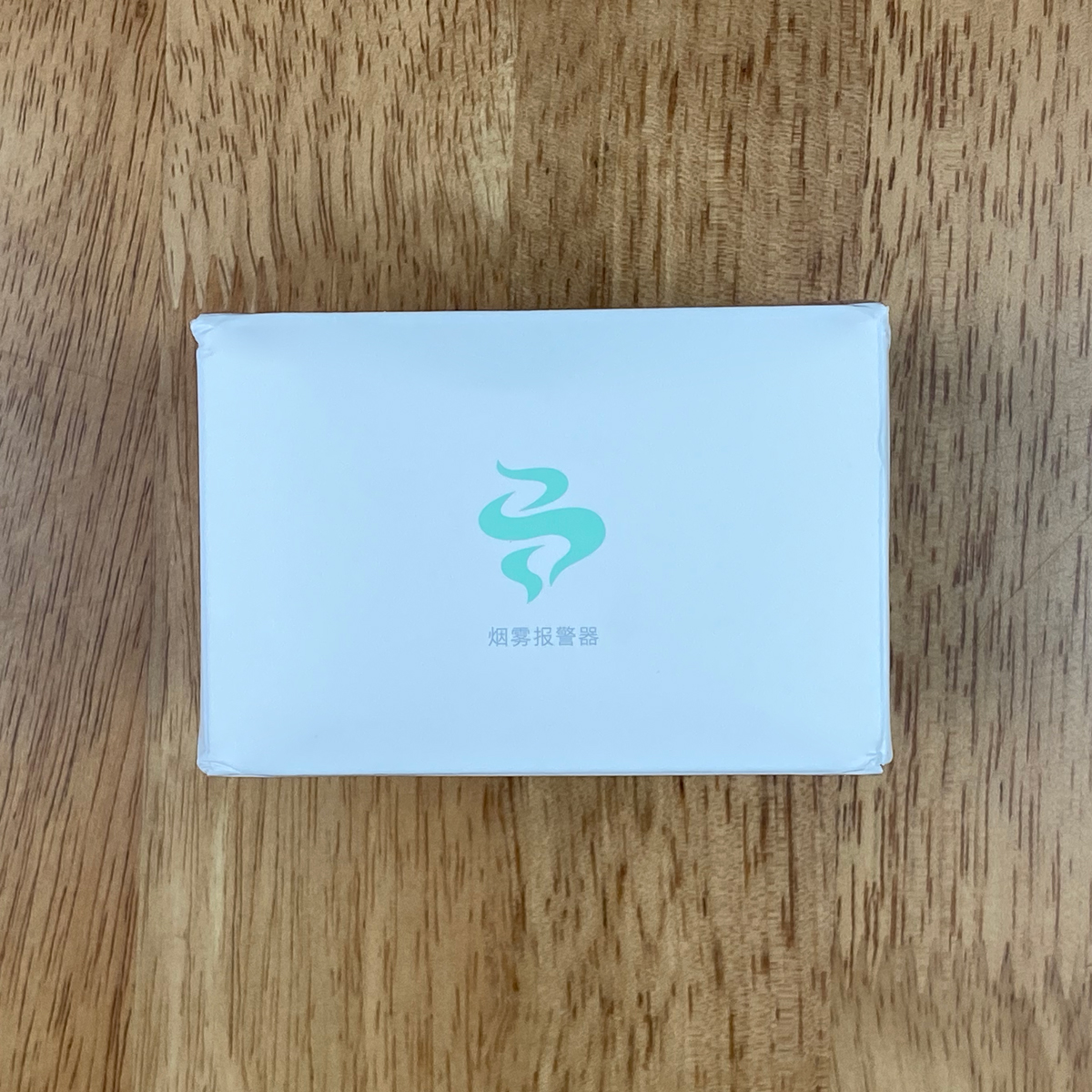

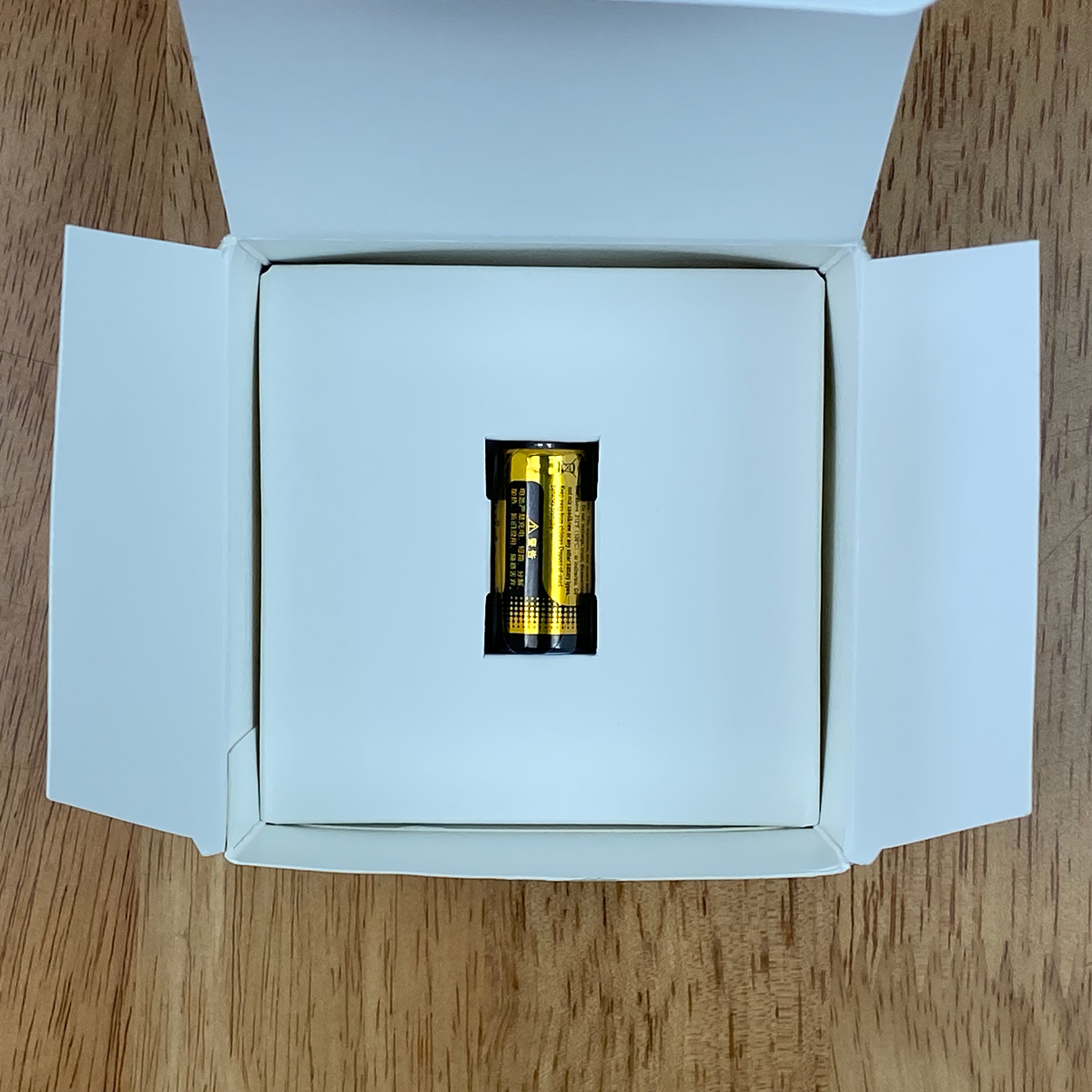
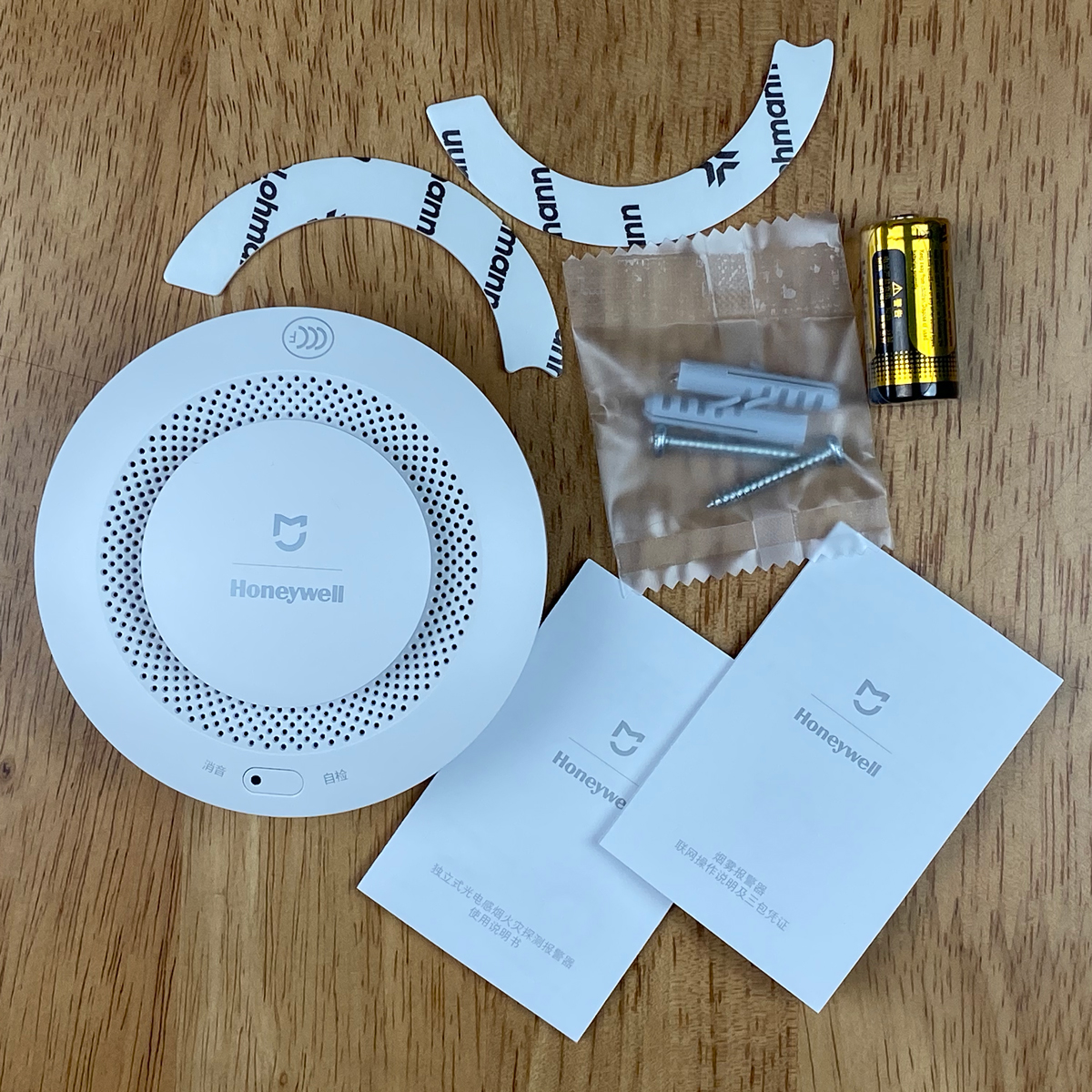

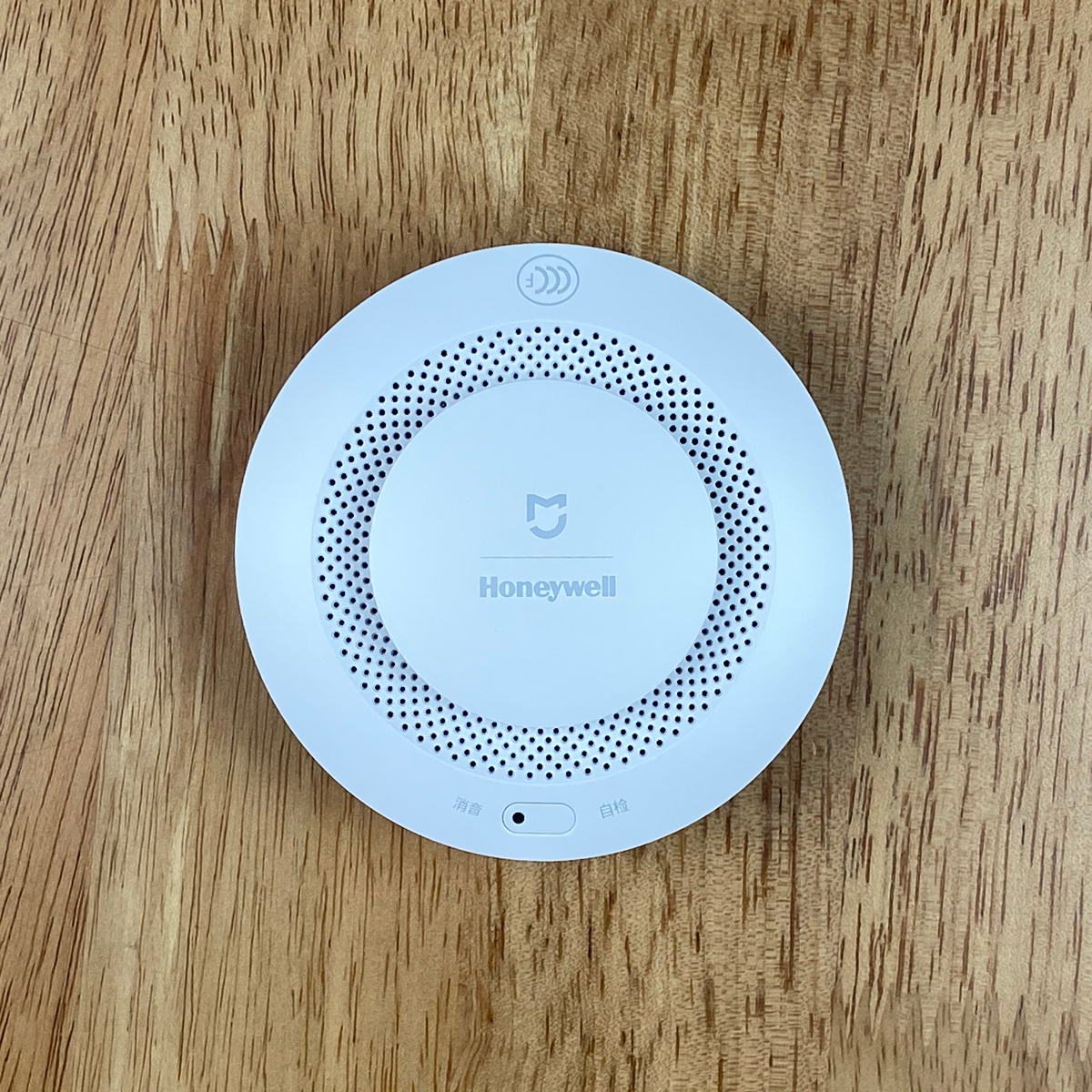


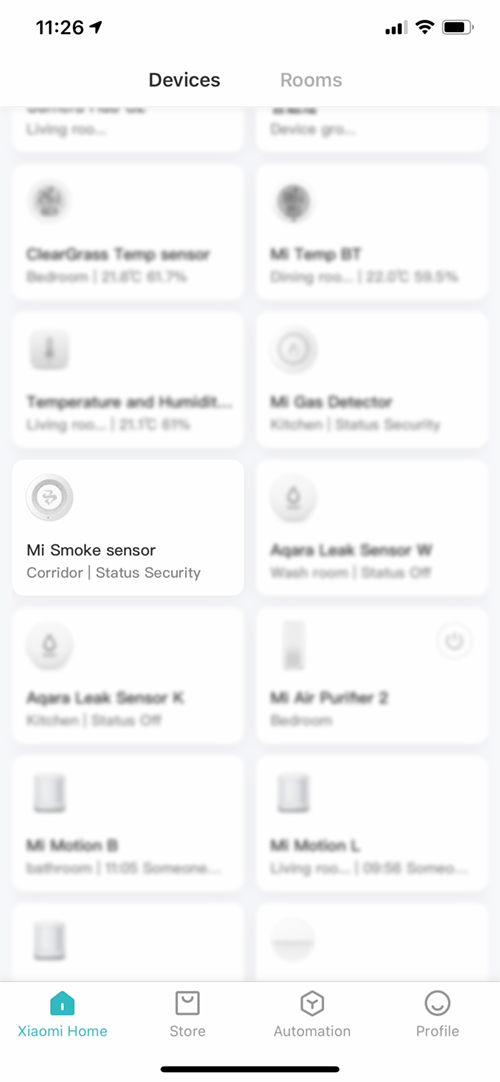

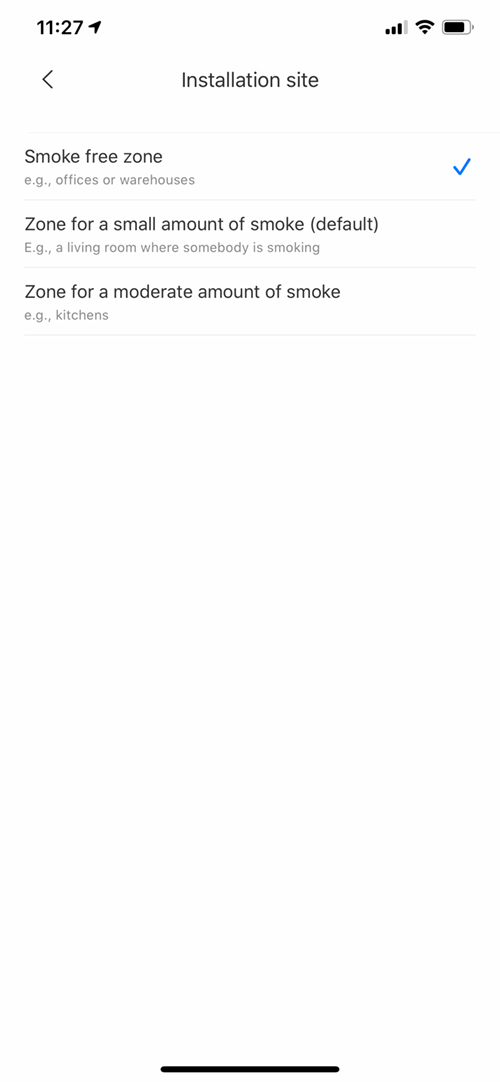
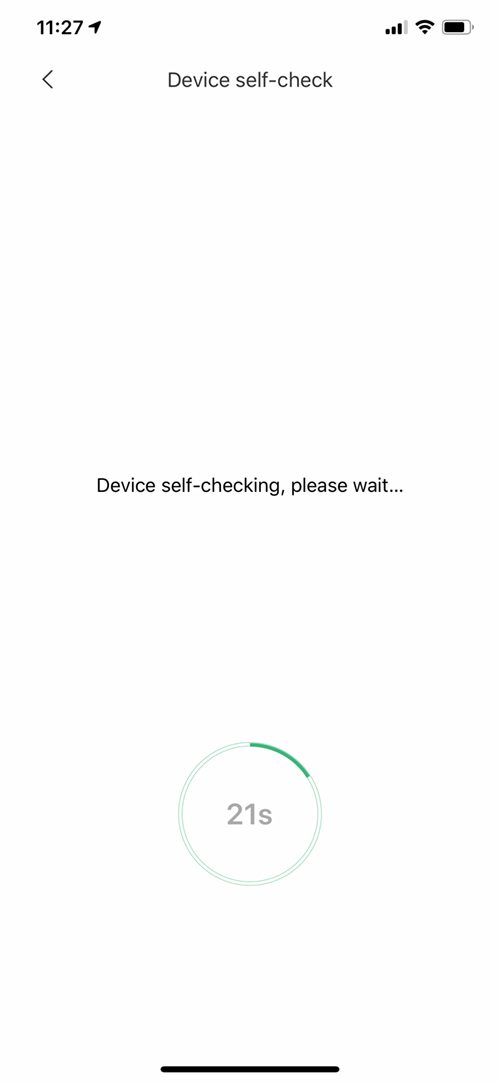
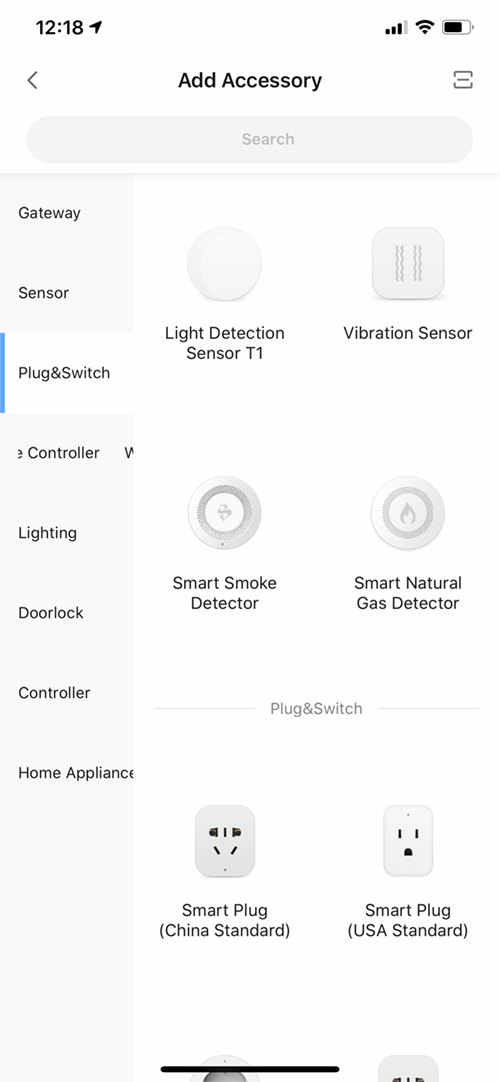

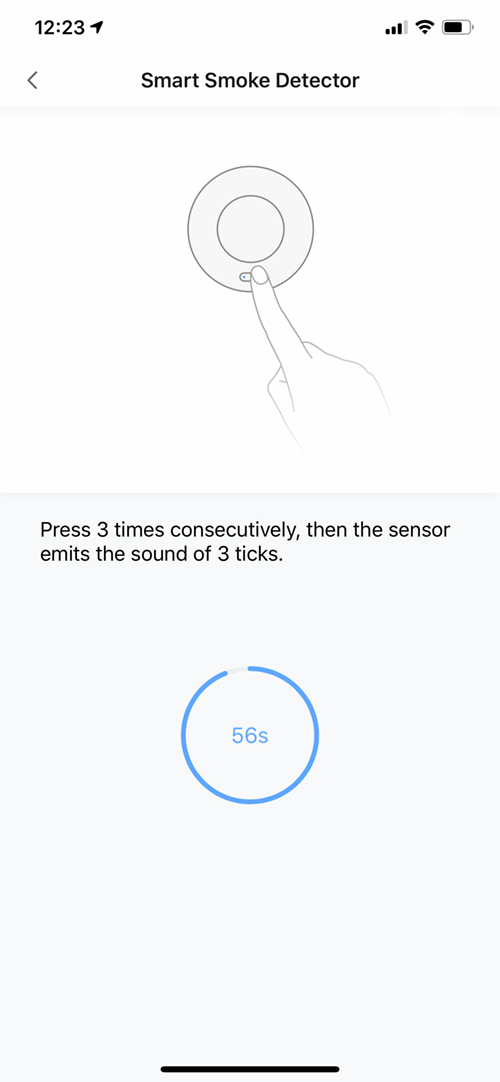


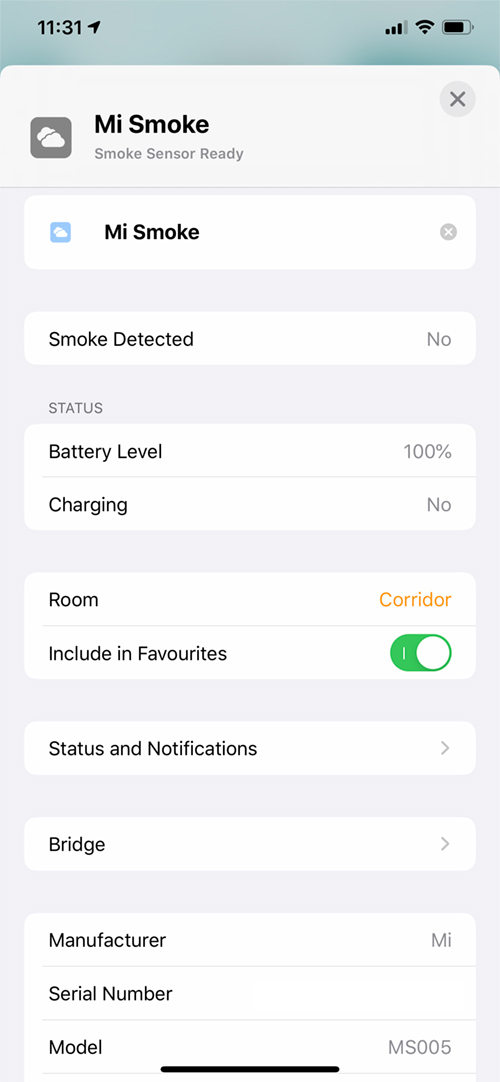
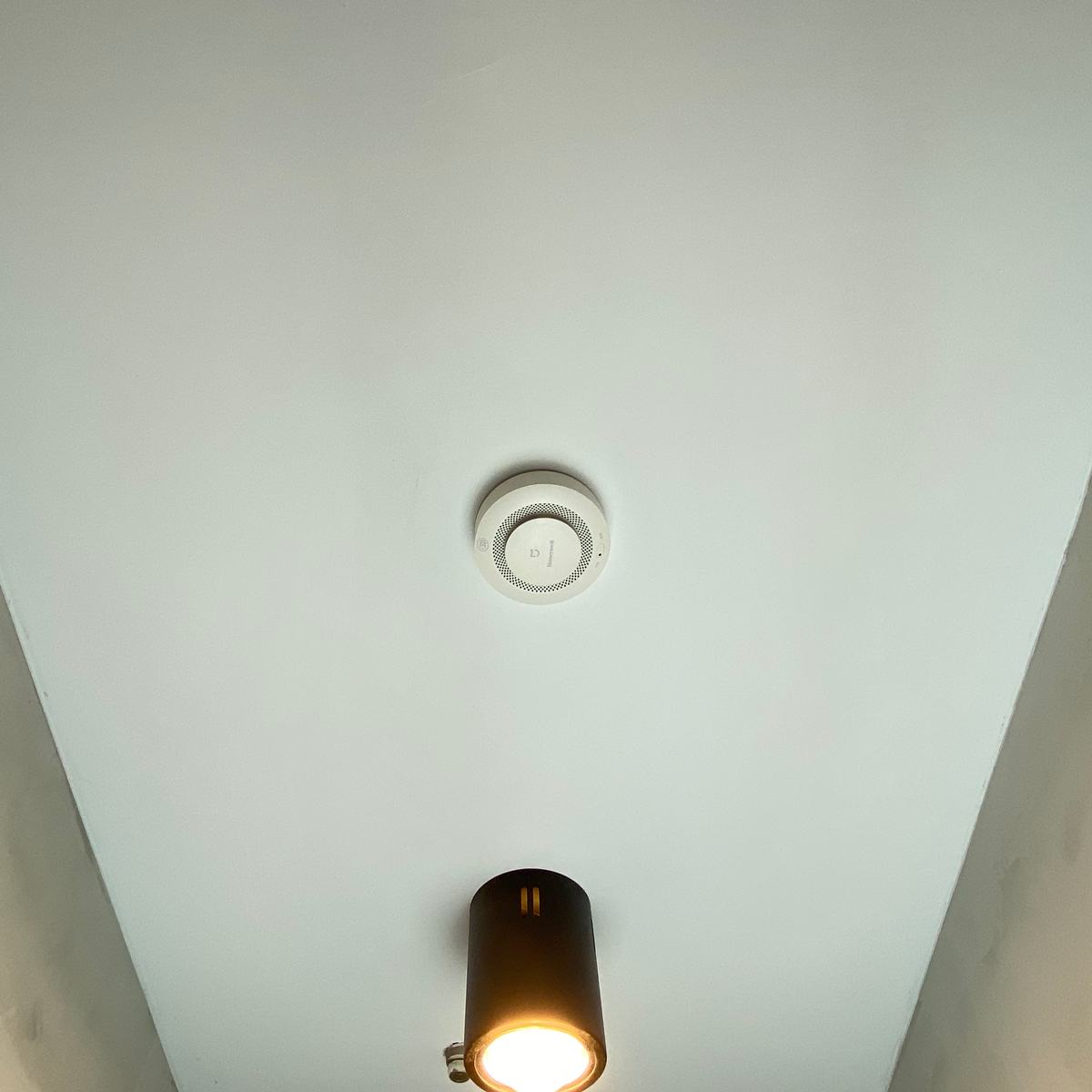
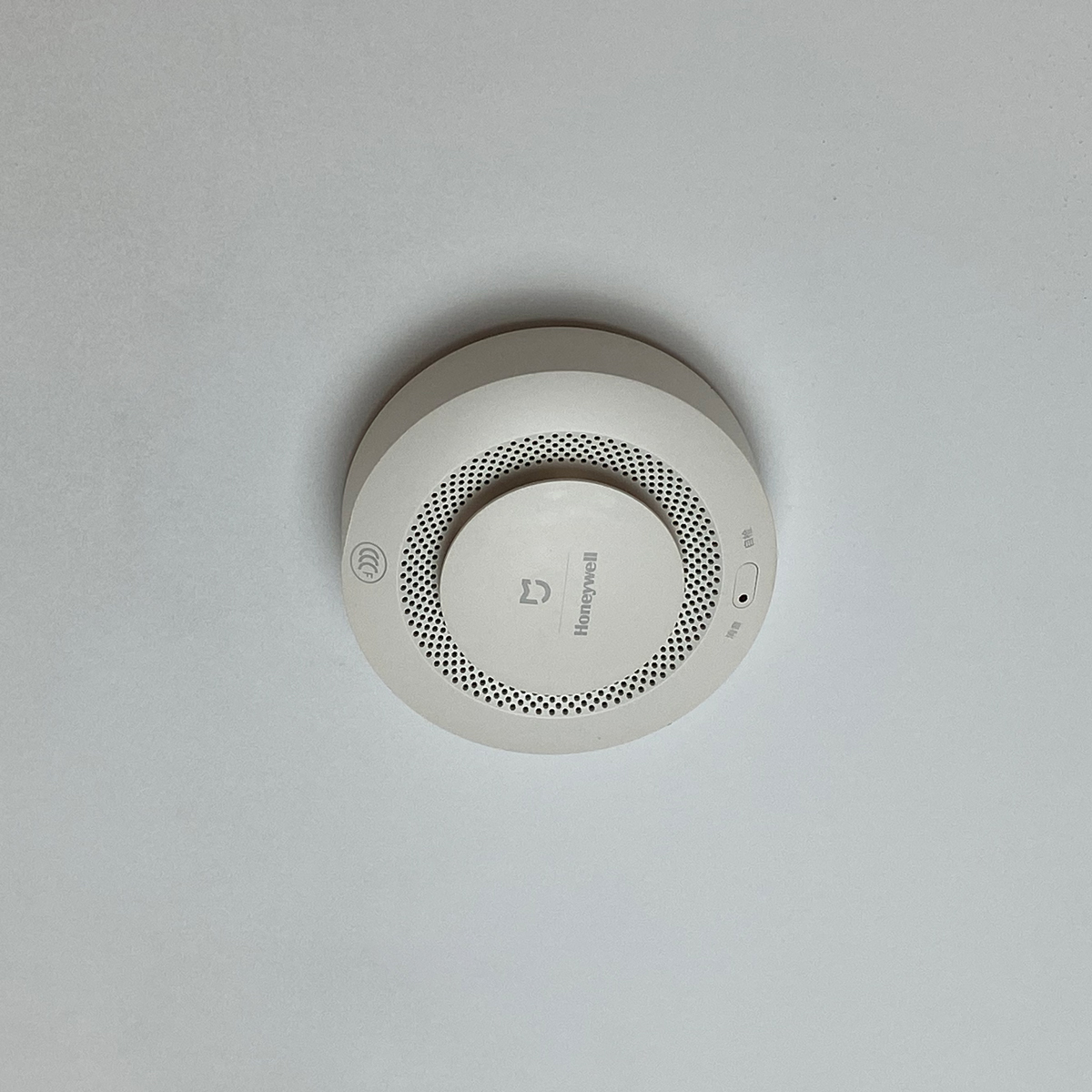
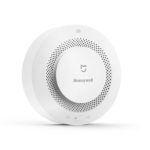

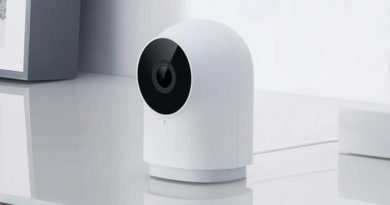
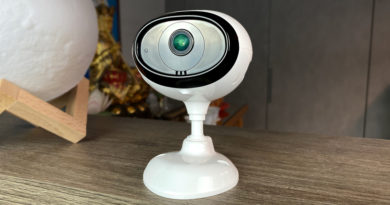
Great review Simon! This is an interesting device. I do find it really surprising that there aren’t more HomeKit smoke detectors available in the U.S. The regulations must be extremely stringent.
Cheers D, it’s served me well so far. Often been tempted by the First Alert ones, but too many issues reported.
Finally, it has no stupud USB wire for the power source.
But its too late, I alraedy invested into Nest.
The gas sensor has a power supply, but I’ve never seen the Smoke detector with a power supply, only batteries.
maybe I am wrong, it was the smoke detector.
I have installed it for my boss lol I dont want it.
There might have been a previous model, but this one I’ve had for the last two years only uses a battery. I’ve also got the gas sensor, and that does use a power supply. They do look quite similar. I’ll have to look at the Nest now that I have a HOOBS setup though.
I just want a simple setup… you know what… my Aqara hub is still not able to add to homekit… even I bought a NEW one..
What problems are you having with not being able to add the hub?
It just keep loading and cannot find it, it took the code tho…
I have ordered the new hub again, hope this will work…
I have invested many sensors and I want to see them in homekit.app
Sorry if you’ve already tried this, but make sure your iPhone is connected to a 2.4GHz network. If you’re using a router that combines the 2.4 and 5.0GHz signals, it may be failing when it only discovers the 5.0GHz signal. Try separating the two signals if you can.
Hi Simon, could you also do a review on the gas sensor?
Yes, I’ll hopefully do a review of that soon. I’ve had one for a while now, so it’s on the to-do list.
You mention the Aqara hub would be needed for this to be exposed to HomeKit, so is it not compatible with the new Mi Smart Gateway? Or at least not yet on the list of HomeKit devices through that hub?
Hi Josh, it is on the list of devices that work with the new Mi Smart Gateway, and should be exposed to HomeKit. However, at present some of the devices that are currently exposed to HomeKit via the Aqara hub, aren’t getting exposed to HomeKit when sent through the new gateway. I’m told this is down to them requiring re-certification with Apple due to going through a new hub. I’ve no doubt it will get exposed to HomeKit, if it isn’t already, but I left it out of the review so far, as I couldn’t check to be certain at the time of writing. I have another smoke alarm being delivered, so I’ll test it with the Mi hub once it arrives, and will update the article with my finidings.
I paired my smoke alarms with the new Mi smart gateway today and it works and they are exposed to homekit.
Also the temperature and humidity sensors are exposed.
The Aqara single rocker with neutral was not though. But there was no problem in pairing it back to the Aqara hub thus getting it back in homekit.
Great review Simon! I have 2 of this products, one in the kitchen and one in the workshop. The only downside I find is the possibility to disarm the alarm from the phone, this would be great, right? Because, as far as I know, to disarm the alarm you have to press the button on the device.
Thanks Pablo. As far as silencing the alarm is concerned, I’ve been told that if you have the Linkage Gateway Alarm function activated, then when the smoke alarm is activated, toggling the alarm switch off, then on again (so the alarm is once again active), should turn off the smoke sensor’s own alarm too. I haven’t tried this myself yet, but it may work.
Hi,
I got this product yesterday and is linked with new Mi Smart Gateway (V3). I did some tests with smoke and when detector started beeping, notification came on my phone, when I opened notification, detector was silent immediately.
Glad you like the review. It’s a good product for a very good price, so it’s difficult to say anything bad about it.
Hi Simon, I have tried 2.4Ghz channel ONLY when I contact their support team and also took video from another iPhone to prove that its really not working because I was asking for a refund.
Even tho they said its not fair to them but Aliexpress force them to issue the refund because its really not fair to me that the gateway doesn‘t work properly… I might try that on another Apple Homekit account later… but most of my sites already has one and I don’t need them to be in homekit.app other than the sensors at my home…
Anyway, I wish the new gateway works…
I replaced my First Alert detectors with Nest Protects. Using the Starling hub, all the detectors are visible to the Home App. I’m really satisfied how easy they were to install and how they work. The pathway night light is great.
I have 6 of these bought like 2 years ago and I still havent got around to installing any of them. I wonder how strong is the adhesive sticker? Have any drop on your head yet? 🙂
I think it depends on what they’re sticking to, but mine dropped once, so after that I just screwed them in place. Luckily I was only drilling into plasterboard, so it was easy.
concrete ceiling. i got the feeling it will drop as the surface is not smooth or the paint might peel off.
If only these can be set to go off sounding the alarm if the hub detects an intruder. Imagine like all the smoke detectors sounding its alarm all at once….that might scare away any burglars 🙂
That would be handy, but there’s no way to access the alarm other than for when it detects Smoke. It does work the other way around though, so if Smoke is detected, it can trigger the alarm in the hubs.